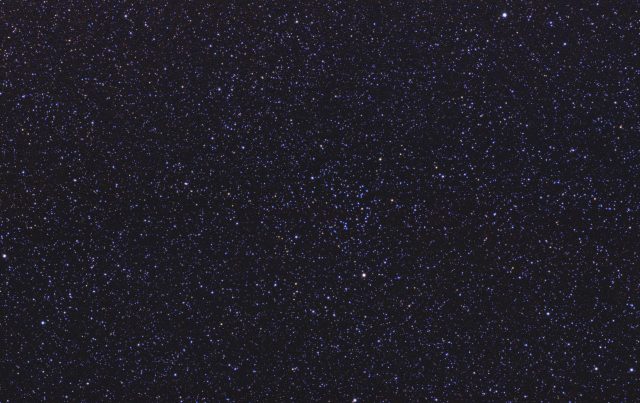
Imaging with a color camera during a full moon night is pointless for dim nebula, but star clusters will come out decent if you have enough sub-images and the noise is kept low with good calibration frames.

Imaging with a color camera during a full moon night is pointless for dim nebula, but star clusters will come out decent if you have enough sub-images and the noise is kept low with good calibration frames.
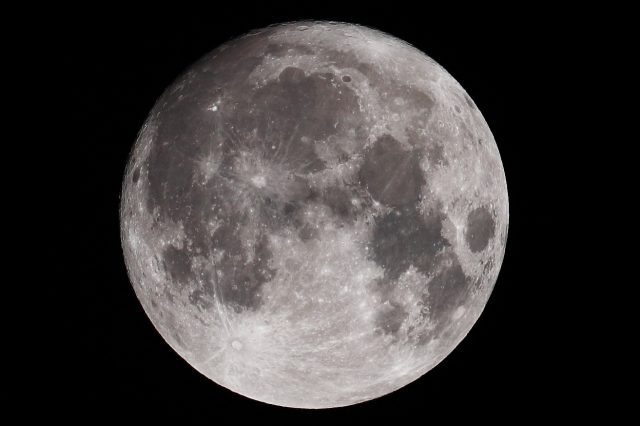
I got a chance to do an equipment shakedown imaging session on Saturday night, Oct 12, 2019. It was my first one this season. I thought I would run into numerous problems, but it was not as bad as I thought it might be. Only a few things were not working and needed fixing or replacing. It was all small stuff, like a busted dew strap and broken focus mask, which I was able to glue back together. The main thing I was able to fix were some issues with my mount’s declination axis and backlash settings. It had been needing some adjustments since before the last time I imaged and I finally got it done.
The weather was nice, at least at first. We had a cold front pass through the night before down here in Cajun Country – the first significant front of the season and it brought the temps down into the 50’s. It was very clear at the start of the night and cool. But, clouds eventually came in and spoiled everything as the night wore on, unfortunately. By 2:00 AM, I was completely clouded out, so I packed it in and called it a night.
Here’s another version of that moon image, which being a Hunter’s Full Moon, made it a worthwhile keeper:
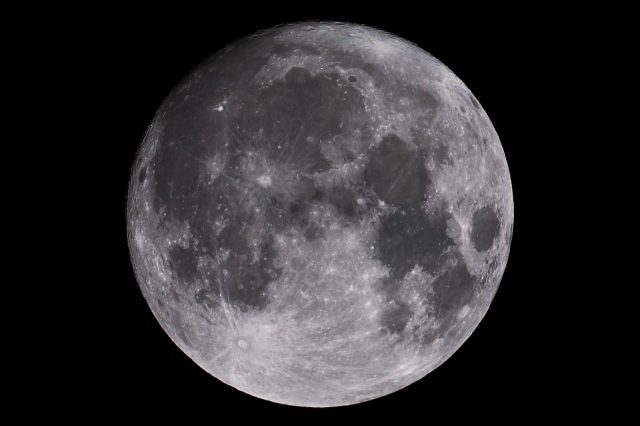

A new comet is in our neighborhood passing by at a relatively close 28 million miles from Earth. It is a very long period comet that we have not seen before, but it has visited the inner solar system over 1300 years ago. However, nobody noticed it because it was probably too dim to see naked eye. It was discovered late last year by Japanese astronomer Masayuki Iwamoto.
Below is the Star-Streaks version with minimal processing. Both images were treated minimally in these first iterations of processing. There is probably room for improvement, but I doubt I’ll get much more than what I have here.
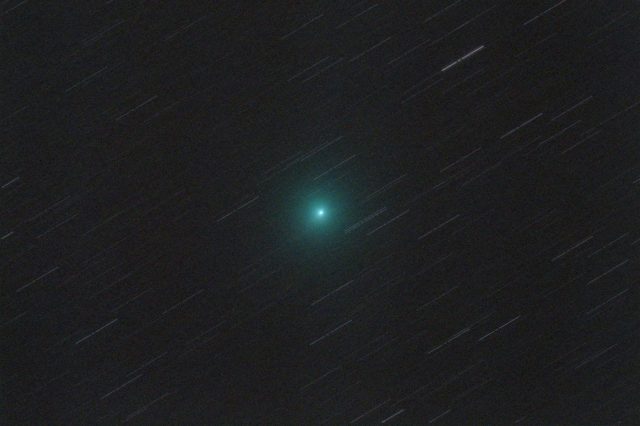
I shot this from a Bortle Red/White zone in the middle of a metro area. It was moving so fast that even 30 sec shots showed trailing. So, I went with ISO 3200 and 30 sec exposures even though it trailed a bit, which was about max for the sky conditions I had this night. I shot some 1 minute subs while trying to guide on the comet, but my DEC calibration was not working, so they showed some trailing in DEC. Plus, I was barely able to pick it up with 4 sec subs, so it was not tracking too well at that setting.
These two didn’t come out too bad, I guess. A darker location would have shown the tail better, probably and there is some hint of it here. Reports are the comet can be seen in binoculars from dark sites, which is pretty good for any comet. But, I knew from experience that when they are barely visible in binos from dark sites, binoculars are almost useless from inside a metro area, so I didn’t even try.
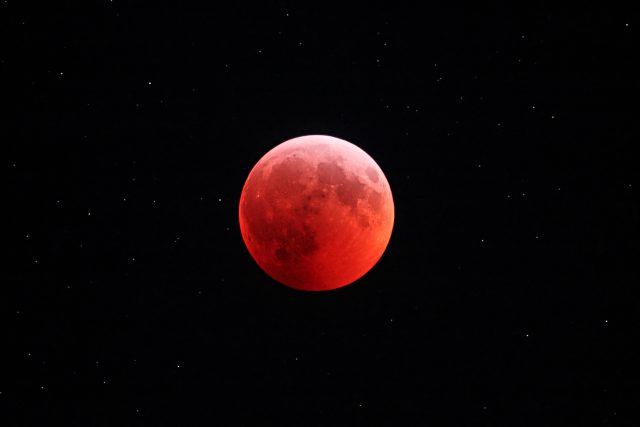

The lunar eclipse of Jan 20, 2019. Top image is just after totality had set in. It is enhanced to show more background stars and brighten the moon a bit, sort of like you would see it in binoculars or a telescope.
The second image is just after mid-eclipse and is enhanced to show more background stars, but not brighten the moon too much. This was more how the eclipse looked to the naked eye.
Below is the whole eclipse saved as a 79-frame animated GIF image:
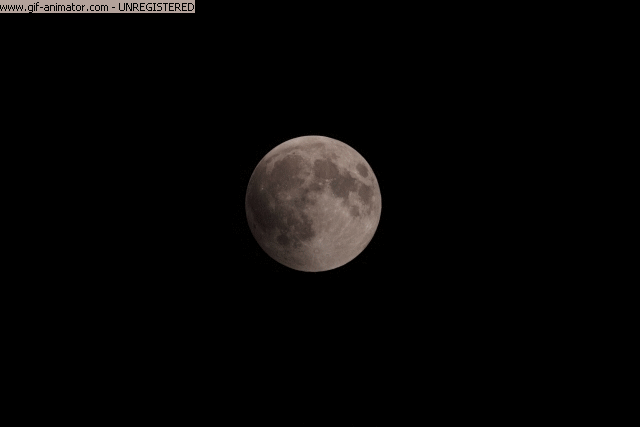
I had a hard time getting the images aligned on this one. I tried manually doing it in PS, but it is tedious and easy to make mistakes. Finally, I had to write a script in IRIS and told it to combine separate RGB files into color images that had been processed through IRIS’s planetary alignment tool. I also tried to make a video file that would upload to hosts on the web. Unfortunately, it always changed the colors to be too bright and yucky with the conversion from AVI to MP3/MP4 or WMV formats, so I gave up on that.
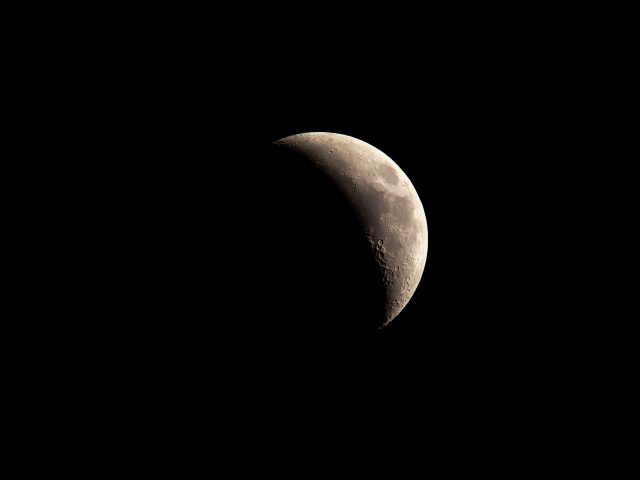
I finally tried my phone with the afocal camera holder and the dob I use from time to time. Yes, it works. But, the image quality is definitely poor compared to my DSLR’s.
A couple of nights later, I setup the TV-85 refractor/Canon T3 combo and took some shots. One was of the moon before the sun had set. Here it is in two versions – as taken and converted to look like a nighttime shot:
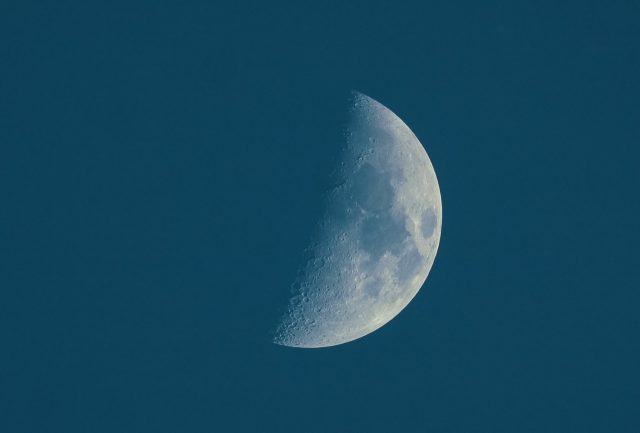

I was setting up for some deep sky and the moon made a convenient test target. Later that night, I shot some images of Comet 64P. Unfortunately, I was cut off by clouds after only 10 sub-images. I was going to just throw this out, but I managed to make an image out of the paltry amount of data, so it is not a complete loss.
Check it out:
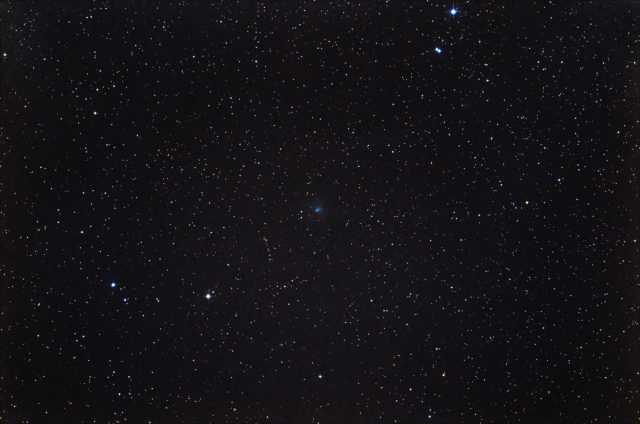
 So far, I’ve managed to image Comet 46P/Wirtanen four times during this apparition with my TV-85 scope and twice with camera lenses. For this time of the year, that is pretty good. December and January are usually months of unending rain and clouds down here in Cajun Country.
So far, I’ve managed to image Comet 46P/Wirtanen four times during this apparition with my TV-85 scope and twice with camera lenses. For this time of the year, that is pretty good. December and January are usually months of unending rain and clouds down here in Cajun Country.
Now that the main part of Comet Wirtanen’s visit is over, it is a good time to do a roundup of the data and see the bigger picture. So, I took the best four star-freeze versions from those four times with the telescope and combined them into one display image above. That way, you can easily compare the shape of the comet and see how it changed depending on our angle of view at the time.
The dust and ion tails were both mostly hidden behind the huge coma on this comet. It was huge because it was so close to us. But, since it was still further from the Sun than we are and the Sun, Earth and comet were in a line, the tails were pointing directly away from us. That foreshortens the length of the tail and makes it look like it doesn’t even have one at times. It is just the geometry of the view angle and the way the coma can overwhelm the dim tails when they are behind it from our vantage point.
When we were more at an angle to the Sun-comet angle, the tail appeared longer. When we were in-line with it and the Sun, the tail decreased. So, it is not totally comet activity at this point that controls tail length, it is view angle and how much is behind a thick coma. You still have the solar wind and how chaotic it is that causes the tail to “flap” like a flag when the wind varies. But, mostly view angle.
46P came in low going high and crossed our orbit then angled above the elliptic plane heading away from the Sun. Our view now is from underneath, you would say. That is why the tail is south now when it was mostly on the north side when it was below the elliptic.

I had been wanting to try imaging 46P with the 200mm telephoto lens I have. I thought I could bust through the LP with the addition of the Lumicon 72mm Deep Sky filter that fits that lens. Oh, well… not enough pass-through for the comet wavelengths and blocking of the LP. It helped, but not enough in the white zone I was shooting from. It works for H-Alpha nebulae, but not much for other stuff.
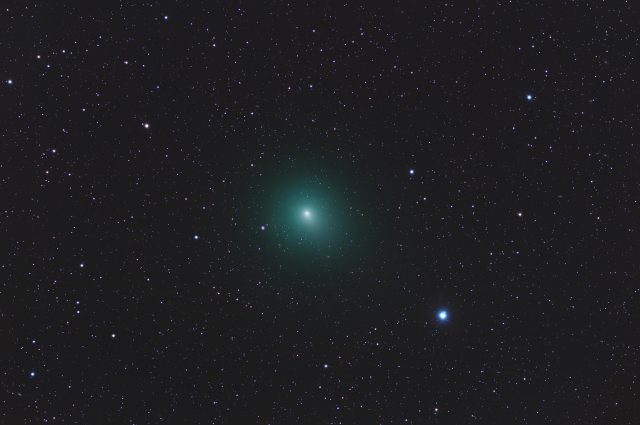
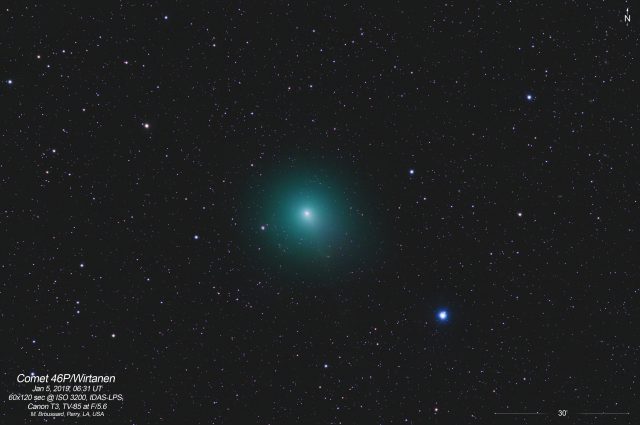
After a long spate of cloudy and wet weather, it finally cleared enough for imaging on the night of Jan 4th/5th, 2019. My last imaging session was just before Christmas, so it had been a while.
The imaging went reasonably well, just getting home was a little difficult due to car trouble, but I made it. Then, I locked myself out the vehicle before I could unload my stuff. Doh! Oh, well… $60 bucks later I was busy working on this image (without getting any sleep, either. ) 🙂
After doing the above images, i did another take on the star-freeze version with this cropped and more gaudy version below. I think it catches more of the extent of the whole comet like the star-streaks version does:
Speaking of the star-streak version, the one I did below is almost pristine. I barely did anything to it. It shows the ion tail much better than the first star-freeze versions, too:
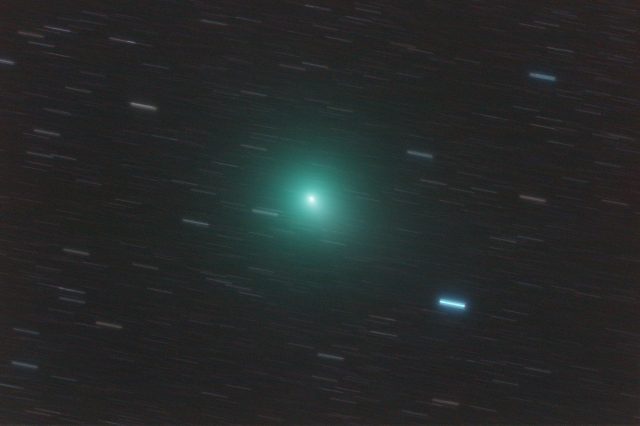
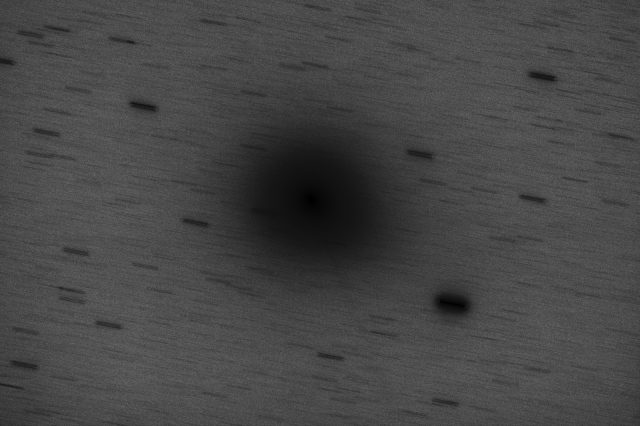
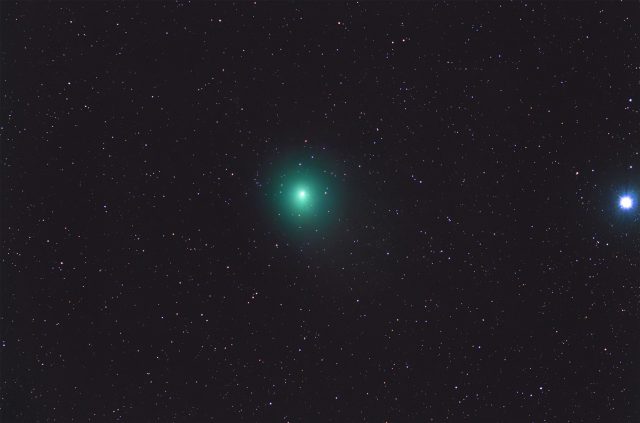
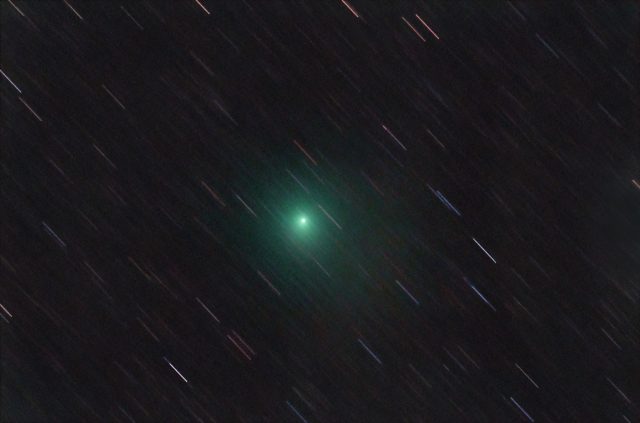
Terrible conditions (and location) for this imaging session. I tried several things before settling on one minute sub-images as my best bet for the conditions. (Bortle 7/Orange zone, high-altitude jet stream clouds with bad seeing and temps near 60 degrees, which while nice and cool for us, is a bit warm for a Canon sensor inside a camera body. )
What can I say? At least there was some photogenic aspect with Capella in the image. Processing was difficult with lots of residual noise from all the LP, clouds and warm temps. But, it was an opportunity to image. Late December usually doesn’t offer much in the way of clear night time skies.
After these 1 minute subs, I took a chance and shot 20 x 300 sec images at ISO 100 while tracking the comet with the guider. I was able to add those in to the above image and I came out with this as a result:
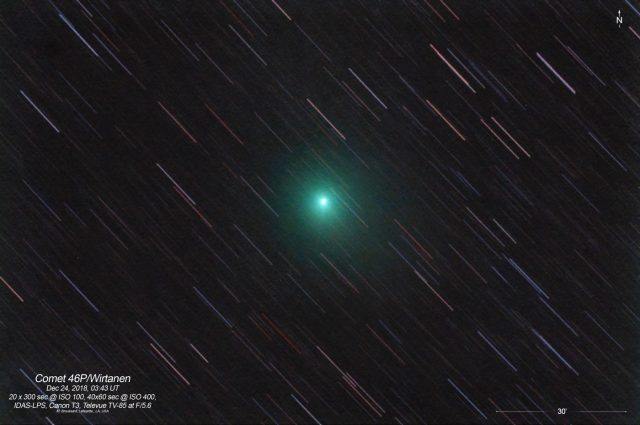 As you can see, the longer subs managed to pull more of the ion tail out of the muck. I also added some of this to the star-freeze version and updated the display images.
As you can see, the longer subs managed to pull more of the ion tail out of the muck. I also added some of this to the star-freeze version and updated the display images.